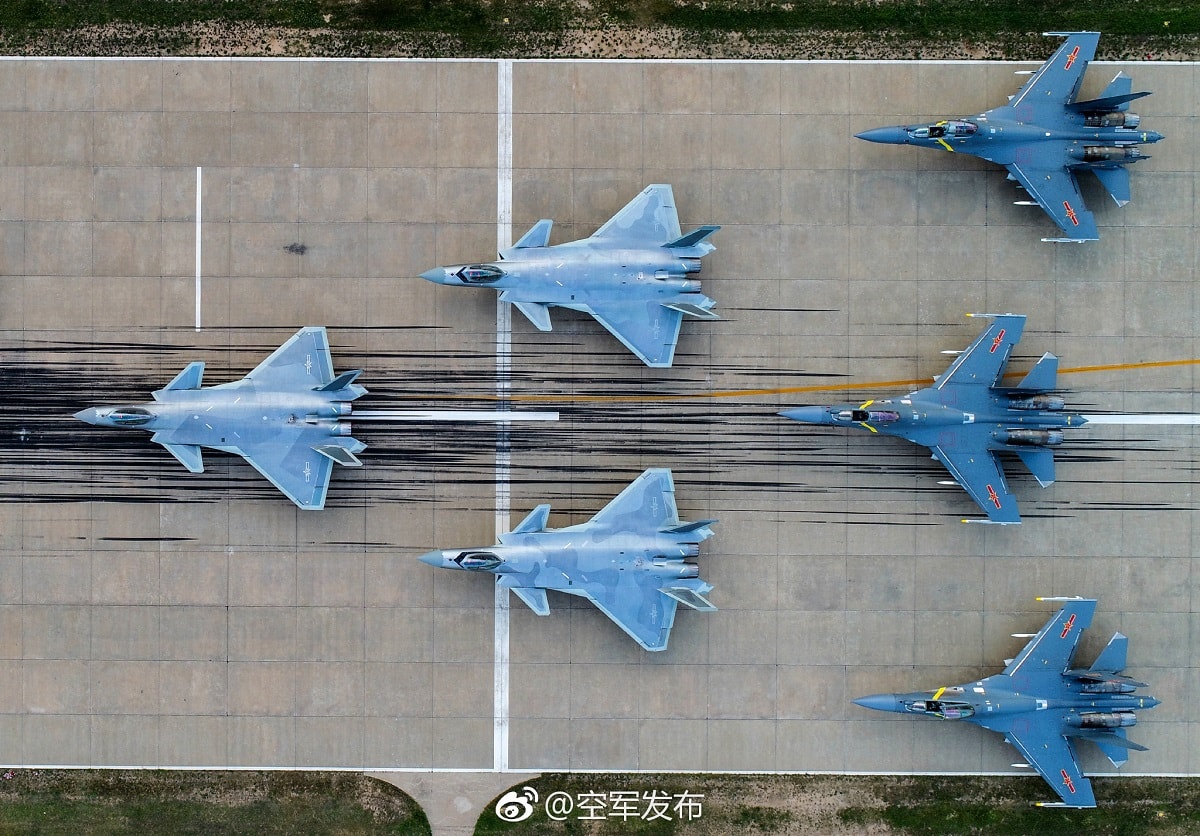Earlier this week, Taiwan reported the largest-ever incursion by China’s People’s Liberation Army Air Force (PLAAF) into its air defense zone. A total of 56 PLAAF aircraft flew near the island on Monday, and it followed previous sorties over the weekend. In total, almost 150 aircraft flew in Taiwan’s defense zone over the span of four days.
The latest mission included some 34 J-16 fighters and 12 nuclear-capable H-6 bombers, which all flew in an area in the vicinity of the Pratas Islands, according to the Taiwanese Ministry of Defense. Taiwan responded by scrambling its own fighter jets to warn away the Chinese planes, while missile systems were deployed to monitor them as well.
The Long Game
Experts have suggested that a Chinese invasion of Taiwan isn’t imminent, but Beijing has maintained that the self-governing island will be brought under mainland control – and by force if necessary.
“We should think of China’s approach to Taiwan not as a bifurcated decision between war and peace but instead a continuous pressure campaign that can take various lethal and non-lethal forms,” Eric Sayers, an expert in Asia-Pacific security policy at the American Enterprise Institute, told Politico earlier this week.
Sayers said that Beijing is playing a long game when it comes to Taiwan.
“Beijing can turn this pressure up or down as it chooses, but it is always occurring in a sustained manner towards the goal of reunification,” Sayers added.
Will Go Down Fighting
Reunification may only come via force, and following the incursions into its defense zone, Taiwan’s Mainland Affairs Council demanded Beijing immediately stop its “irresponsible provocations” as the “chief culprit” behind the recent tensions.
“We sternly tell the Chinese Communists, the Republic of China on Taiwan is determined to firmly defend national sovereignty and dignity and peace across the Taiwan Strait,” the council stressed, while also using the self-governing island’s formal name.
“We have a full grasp of the communist military’s movements and have made appropriate responses,” the council also noted. “We have also been actively communicating and cooperating with friendly countries to jointly contain the Chinese communist’s malicious provocations.”
Taiwan seems more than willing to go down fighting, and could make a reunification especially costly for Beijing. To that end, Taipei has increased its defense spending.
“The increasing number of military incursions by China underscores what Taiwan will see as its justification in maintaining record levels of defense spending in recent years, which according to GlobalData is set to reach US$18bn by 2026,” said William Davies, associate aerospace, defence and security analyst at data and analytics company GlobalData, citing GlobalData’s latest report: Taiwan Defense Market: Attractiveness, Competitive Landscape and Forecasts to 2026.
“Taiwan’s defense budget is driven by the country’s need to purchase advanced military capability as a deterrent to its superpower neighbor – for example by acquiring F-16s, its first indigenous submarine and a precision missile system,” Davies added.
He also noted that Taiwan’s military strategy essentially acknowledges that the self-governing island would not be able to engage in a full-scale war with China.
“Instead, it is focused on retaining high-quality platforms with the capability of deterring its neighbor from making any serious attempt to invade – such as the special budget passed in 2019 for F16Vs, which will help to modernize its armed forces,” Davies explained. “In recent years, China has been increasingly willing to push back against claims of Taiwanese autonomy, and the election of a pro-independence candidate Tsai Ing-wen in 2020 has only increased its neighbor’s threats towards the Island nation, and, therefore, its associated need for increased defense spending.”
Peter Suciu is a Michigan-based writer who has contributed to more than four dozen magazines, newspapers and websites. He regularly writes about military small arms, and is the author of several books on military headgear including A Gallery of Military Headdress, which is available on Amazon.com.

